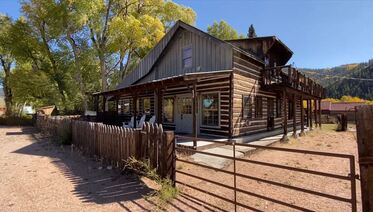
Ohio City is a “semi-ghost town”, in the Quartz Creek Valley; just a few miles away from the more populated town of Pitkin Colorado. Many of the original homes remain, but the main street has suffered the loss of most of its buildings. Like many Colorado ghost towns, Ohio City; has had a few declines and rebirths. The most recent of which happened in the 2010s. In fact, I would say this town has the potential to come back, but I’ll cover that a little later.
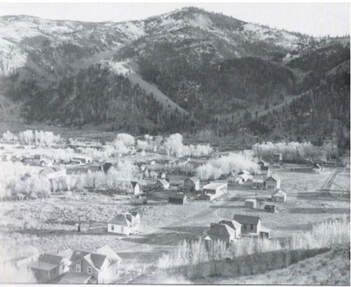
Ohio City got its start in the 1860s when gold was discovered in the region. Interestingly, the location and source of the gold nuggets discovered remain unknown. However, the elusive source of gold ran dry in just under a decade. At that time the town was left completely abandoned.
Ohio City saw it's second coming in 1879 when an assayer named Jacob Hess found silver in the Gold Creek. Jacob promptly renamed the creek “Silver Creek”, and with that action, he kicked off a population boom in Ohio City. Jacob was considered the first settler in the area despite the previous settlement. He took the opportunity to rename the settlement “Eagle City”; however, once the settlement grew into a town, it once again took the name “Ohio City”. The very next year the Denver, South Park and Pacific Railroad was built through the town. In the process, they created the now-famous alpine tunnel. 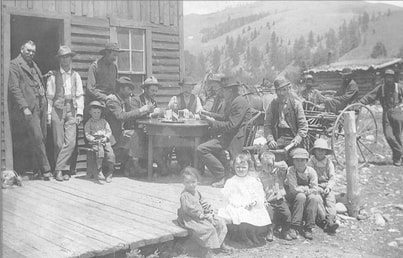
In 1893 the price of silver collapsed overnight and the town quickly followed suit. The population of Ohio City dwindled until 1895 when the town was once more declared deserted.
Fortunately, in 1896 a new source of Gold had been discovered. This once again made Ohio City a lucrative investment and the town's population rushed back in. One of the largest investments was the Willow Creek Mine, which still operates to this day. Although at a different capacity as it now mines for common gems, quartz, feldspar, graphic granite and the smallest imaginable flakes of gold. This illustrates to me just how few people are needed to operate a modern mine. This is most evident when you consider that the mine is still open, but Ohio City is nearly deserted. 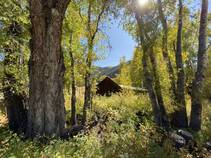
That said; in 1896 three Harvard University students and brothers returned to survey the land once more. The carter brothers as they were known soon formed the Carter Mining Company. At about the same time a man named E.M. Lamont began the Raymond Consolidated Mines Company. These two organizations began to mine in Ohio City in 1908 and continued work until 1912 when the profit dried up. This began the 3rd decline of Ohio City.
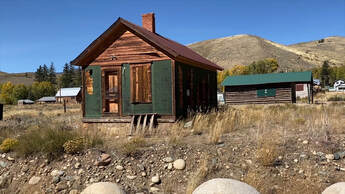
In 1936 the entire region had a boost when the Works Progress Administration (WPA) issued a construction grant for $20,000 to build the Monarch Ski resort. Projects like this were common during the Great Depression and were a good way to put people back to work. Furthermore, the resort helped to stabilize the community for years to come.
In 2012 Gunnison County applied for and received grant funds from the Colorado State Historical Fund. The funds were primarily used to rehabilitate the Ohio City’s City Hall, Jail, and School House.
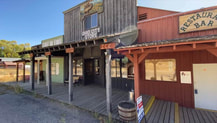
Once all of their improvements were complete the building was equipped with, the general store, two apartments, a liquor store, a gift shop, a Restaurant, and Bar. Not to mention they added 10 RV hook-ups, a septic system, and outbuildings. This was and still is the single most equipped building within the next three towns.
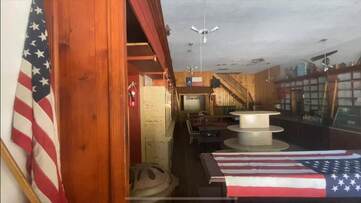
This wasn’t John and Pat’s first go at owning a western restaurant. In-fact before the opened up shop in Ohio City they owned the largest restaurant in Cheyenne WY, the Mayflower. John was able to leverage his contacts in Louisiana and Wyoming to develop a shipping method that delivered fresh fish to the Mother Lode every two weeks. To offer fresh seafood in the Rockies was a rare treat. Customers were quoted as saying “What an amazing and unexpected experience in the middle of the backcountry“, and raved about the fresh flounder and Jambalaya. For a time the Mother Lode was the heart of the community and is what kept Ohio City from being considered a complete ghost town. Unfortunately, in 2016 the Mother Lode closed its doors and ushered in Ohio City’s first ghost town era in over 114 years.
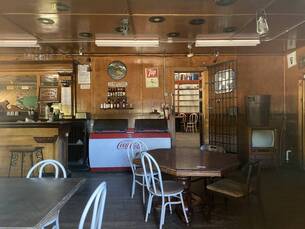
On a personal note, I believe this town can come back. At least the Mother Lode could be brought back at a reduced capacity. The property is still up for sale and is in amazing condition. It had very healthy street traffic when I visited (and I visited off-season). It’s literally move-in ready and is available for just under a million dollars. While this is a steep price, it comes with a boatload of potential. Today you can find souvenir keychains from the Mother Lode being auctioned off on eBay and are sold as collector's items on Amazon. People from the area still speak fondly of the Mother Lode and would welcome its return. Perhaps with a new set of products, new management, and a slightly less complicated LLC structure this business could once again succeed. And in the process lift this town out of ghost town status.
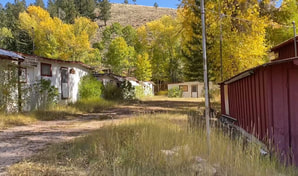
Today, no active businesses remain, but there's a lovely walking tour available. The town is occupied by a few seasonal residents and visiting 4x4 enthusiasts. Much of Ohio City is either for sale, boarded up, or downright abandoned. You can find Ohio City on CR-76. If you are heading from Gunnison: Take US-50 East for 11 miles, turn left on CR-76, Follow for 8.8. From Salida: take US-50 West to CR-76 and continue for 11 miles.
1 Comment
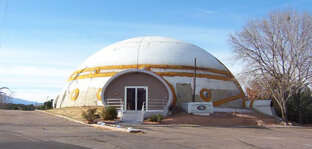
This strange property is locally referred to as the Geo-Dome, short for “Geodesic dome”. People who can remember it before it’s current coat of paint often called it the “R2D2” building. Due to its former resemblance to the robotic character from the Star Wars movies. However; this building is neither an homage to R2D2 or one of Buckminsterfuller's famous dome designs.
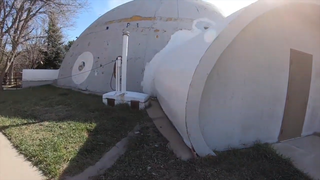
It was actually a rocket scientist's expanded polystyrene laboratory... Yes, you heard me right this thing is made of styrofoam; we’ll get to the rocket science portion in a moment. While this sounds strange to many westerners, it’s a common building material in places such as; Asia. In fact, the material is preferred in Japan for its durability against earthquakes and water. While in the US we are familiar with this material as packing peanuts or disposable coffee cups. We see it as a material to avoid using for major construction because it does not biodegrade and releases carcinogens if burned.
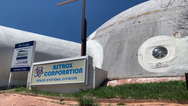
The building has sat dormant since approximately 2012. Some of the neighbors said that someone lives there and I don’t doubt it. However; it does say it is for lease as an office space. But this doesn’t mean it is not owner-occupied or sublet to someone for the time being.
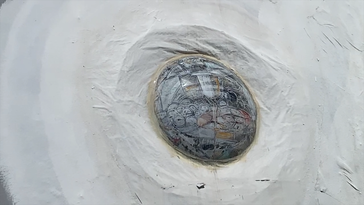
This property has been many things ranging from a church to an apartment. However; it was primarily used as office space for the “Astrox Corporation”. Which is a privately owned professional engineering company, from College Park Maryland. In other words, it was a group of programmers and rocket scientists. Their website states that they are headquartered in Maryland, with “an office” in Colorado. However; the more substantial structure of the two was the dome and the headquarters is a home address in the North East. That said; Bloomberg estimates Astrox as having an annual revenue of $500,000 to $1 million and employs a staff of only 1 to 4 people. In-fact the company was known in the aerospace and aviation industry for its work on “air-breathing jets”. The revenue is largely due to the president and founder of the company, Dr. Ajay P. Kothari. Who received large federal research grants. Grants that can be verified up until 2012. However; no business under this name was ever registered with the Colorado Secretary of State. The company still operates a website, but it does not seem to be actively maintained. The company name appears as “Astrox Crop” on long and vague national research studies and publicly available email threads dating back to 1985.
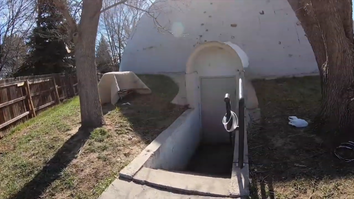
Dr. Kothari is a very accomplished individual. He holds advanced degrees and has worked on a number of projects for NASA, the armed forces, and McDonnell Douglas (now Boeing). He is active in many organizations and periodically writes articles.
We are left to wonder a lot about this building. With so much success on paper, why is it left in this condition? Photos from the day:
The drive-in is about as American as it gets. We love our cars and going to the movies is the standard fallback plan every weekend. However, many of these beloved outdoor screens are in constant peril of closing, reopening, and closing again.
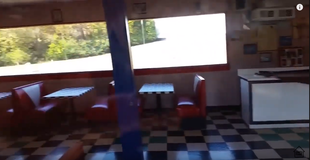
This summer, many theaters will be showcasing a live stream Jimmy Buffet concert, which in 2018 doesn’t seem to fit, but does the drive-in belong in the age of iPads and 3-D printing? The biggest event to happen to the drive-in industry, switching to digital, is advertised on dated websites with glittery backdrops that remind you of an early America Online profile. So why do we go? Why fight to keep these relics open? Because the drive-in’s quaint nature is no more than it advertises. In its simplicity, affordable tickets bring communities together on sticky summer nights and that’s a rarity today.
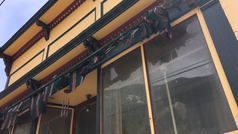
What we see in this video is the remains of an 1800’s silver town. I will be bringing you a few stories and videos from this area. However; I would like to take a moment to focus on this 1885 home and storefront and its tale.
This area is what is referred to as a Statutory Town or “Living Ghost Town”. Many tales abound from this town and region. One of the most well-known stories involves this building and a much-beloved citizen from the towns mining days; Clifford Griffin. According to the story, Griffin came from New York City, where he was raised. Mr. Griffin became engaged in New York, but his fiancé mysteriously, died the night before their wedding. The tragedy was attributed to “unnameable” or what we now call "natural causes". 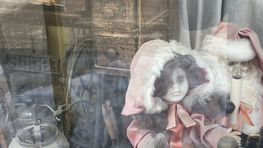
Like many do to this day, Griffin decided to escape the painful memories, by moving to Colorado. He moved with his brother, with the aim of forgetting his beloved. Eventually, he became the manager of the town's largest mine. He started his shifts at what was considered a very generous time, 7:30 AM. Later the mine was locally called and eventually renamed “The 7:30 Mine”.
lifford was very loved by his staff and was considered to be very kind. Each Christmas he bought all his miners a goose for their families. Every 4th of July, he paid off every bar tab between Silver Plume and what is current-day Bakerville. He did this so his miners and staff could enjoy their holiday without spending their family's money. In addition to taking care of his miners during the holidays, he provided them with nightly entertainment. 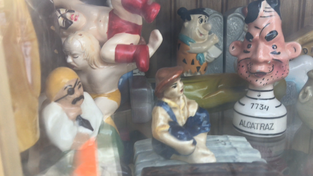
Legend has it that he could not bear the daily sight of his men with their wives and families after his tragedy. Clifford spent a great deal of time near the entrance to the 7:30 mine, which sits 1,500 feet (460 m) over the town of Silver Plume. Every evening he would sit on the edge of a nearby cliff and play his violin. The valley has incredible natural acoustics, which carried the sound down for the entire town to hear. People stated that they “could step outside and listen to his evening concerts”.
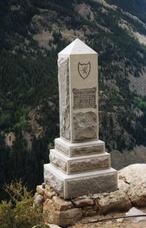
According to local legend, after a particularly beautiful recital, the residents heard a single gunshot. Assuming the worst, the miners of the 7:30 raced up the trail to its entrance. Once there they found Clifford Griffin, shot through the heart and in a shallow grave he'd dug himself. In the Manager’s Office, a note was found. The note asked the residents of Silver Plume to leave him where he lay because that's where he'd experienced the most happiness since his wife died. The town honored his request and later erected a 10-foot-tall Gunnison-Granite monument in his honor. Which still sits to this day, directly on top of his grave site.
Photos from the day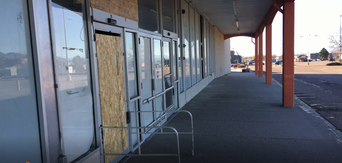
At one point in time, Kmart was bigger than Walmart. Yes, that's right! For a long time, it knew exactly what middle-class consumers wanted and needed. So, why is it almost out of business today?
Similar to Sears, K-mart took its size and prominence for granted. They assumed that K-mart had solved the riddle of the middle-class culture when in reality, their tastes and expectations evolved. Kmart was not a perpetually innovative company. In fact, most of us over 30 can remember when Walmart was a crappy little store. Walmart recognized that merely selling cheap crap wasn't enough, and has continually improved its stores. It now is able to sell a handful of quality brands at average prices. Walmart recognized that middle-class consumers are aspirational and don't want to settle for only cheap goods, whereas K-mart is stuck in the past. 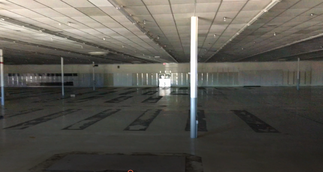
K-mart placed large bets on the future of “big box” stores. Both its own stores and other retailers that K-mart acquired in the early 90s. Unfortunately, this was also the time where the internet began welcoming e-commerce customers and sales. Sites like Amazon and eBay were in their infancy, but they were an early harbinger of what was to come.
K-Mart merged with Sears a few years later. This move was like two rocks holding each other tight in the hope they don't sink. Both companies wracked up large debts in the early 21st century. Which made it impossible for both companies to compete on price and bring their stores up to modern prices. Arguably the biggest contributor to the downfall of K-Mart was, Walmart. Walmart is a despicable competitor that has always had a heartless eye on closing down its competition. Even Amazon tried to expand its scope by poaching Walmart marketing talent and trying to learn how Walmart uses logistics to its advantage. If K-mart is going to compete with Walmart, they will need an A+ management team, a ton of money to burn, and they'll need to get aggressive online. Lets hope K-Mart is up for the fight... Photos from the day:Music from the video: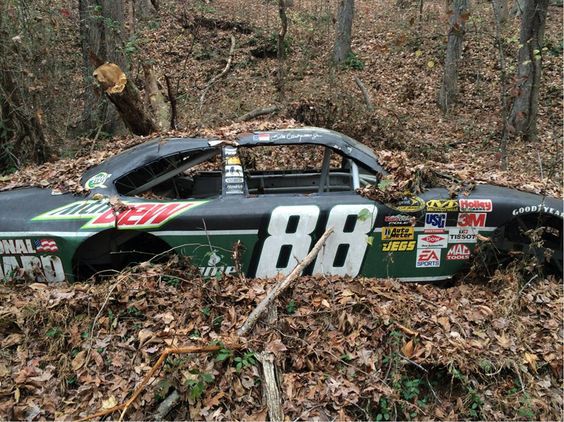
National Association for Stock Car Auto Racing (NASCAR) is an American auto racing sanctioning body and operates automobile races. NASCAR is mostly known for its failing stadiums and dwindling fan base. Its three largest racing series are Monster Energy Cup, the Xfinity Series, and the Camping World Truck Series. NASCAR sanctions over 1,500 races at over 100 tracks in 29 out of the 50 of US states. They, however, are much less popular than they were in the 80's and 90's. During this time of transition, they have built and abandoned many stadiums Cafes, and Relics.
|
AuthorThank you for visiting! This is a collection of media from the lost and abandoned corners of the world. Please have a look around, I hope you enjoy. Archives
April 2022
Categories
All
|
Libraries |
Support |
|


